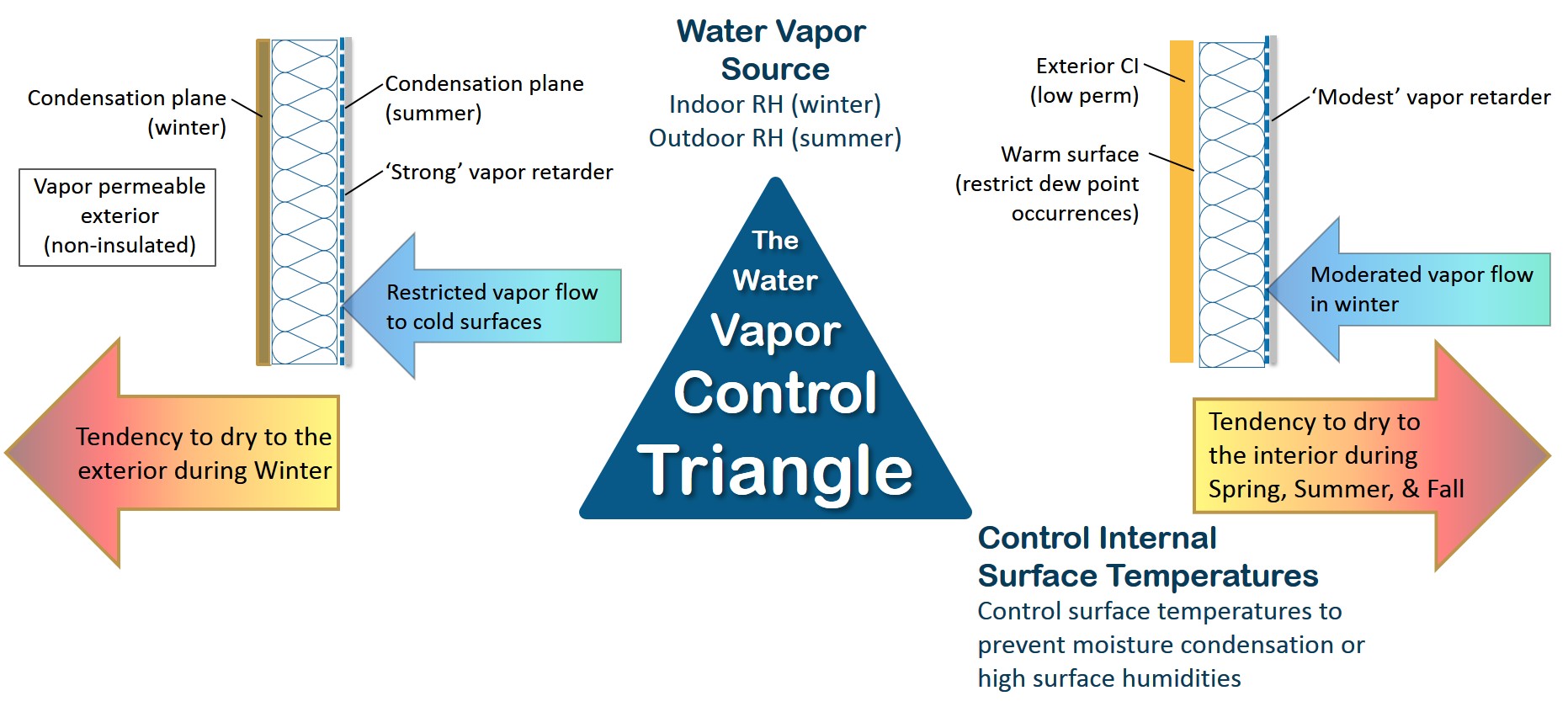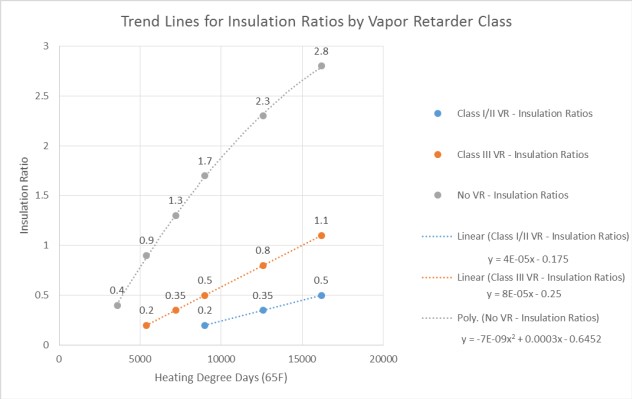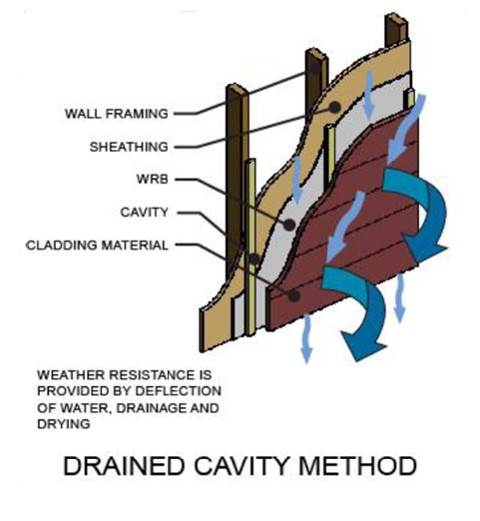Recently, the Applied Building Technology Group, LLC (ABTG) analyzed current market knowledge, data, and practices with regard to water vapor retarder methods. This analysis was undertaken to develop a simple and robust approach to wall designs with various types of insulation strategies and water vapor retarder options. According to Jay Crandell, P.E., the principle investigator, “It became clearly evident during the course of the study that there were certain gaps in the current codified practice that did not fully account for important design considerations, variables, or options needed to more consistently and confidently avoid poor performance outcomes in the field.”

Above is an illustration of the “Water vapor Control Triangle” and the two accepted moisture control design approaches for cold climates – one focuses on control of material vapor permeance and the other focuses on control of temperature. The science outlined in the research makes it clear that while both approaches work when properly implemented, the 'perfect wall' for both energy and moisture vapor performance uses thick foam on the exterior of the wall studs with a moderate vapor retarder on the interior of the studs. Neither the U.S. code nor the Canadian code completely implement the 'perfect wall' approach.

The ABTG study found that many of the gaps in the code could be filled simply by combining complementary features included in the U.S. and Canadian codes.
For example, the Canadian code addresses requirements for permeance limits for material layers on the exterior side of walls. Where this is not satisfied, it requires the use of exterior insulation to control moisture. However, it only addresses these matters when Class I (e.g., poly) or Class II (e.g., Kraft paper) vapor retarders are used in colder climates.

On the other hand, the U.S. code only addresses this topic when a Class III (e.g., latex paint) interior vapor retarder is used, ignoring any concern for exterior insulation amounts or water vapor permeance of material layers on the exterior side of walls when a Class I or II vapor retarder is used.
The report documents how such gaps can lead to inconsistent performance.
Taken together, provisions in the U.S. and Canadian codes offer a much more complete set of solutions and broader range of options. ABTG gathered these findings into a research report titled, “Assessment of Water Vapor Control Methods for Modern Insulated Light-Frame Wall Assemblies,” which is available as a free download. In the report, the U.S. and Canadian provisions were put to the test by assessing performance data from many available and documented studies of actual constructions, as well as modeling, including two common wall types: those with cavity insulation only and those with a combination of cavity insulation and exterior continuous insulation.
“In short, we plotted both failed and successful performances against current code requirements in the U.S. and Canada” says Mr. Crandell. The report finds that the unified framework of requirements based on combining U.S. and Canadian code requirements consistently distinguishes between acceptable and unacceptable outcomes. “Only a couple of tweaks were needed” concludes Crandell.
The research report is accompanied by an educational PowerPoint presentation which addresses five key building science concepts for moisture control, including matters such as rain water control and methods to properly select and detail cladding systems (such as specifying drained cladding installations in higher hazard climate conditions).
For additional information, review the following articles, as well as the previous videos in this series:
Perfect Wall Articles
- Creating the ‘Perfect Wall’: Simplifying Water Vapor Retarder Requirements to Control Moisture
- Perfect Walls are Perfect, and Hybrid Walls Perfectly Good
- Wood Framed Wall Insulation Calculator Explained
- New Wall Design Calculator for Commercial Energy Code Compliance
- Energy Code Math Lesson: Why an R-25 Wall is Not Equal to a R-20+5ci
- Continuous Insulation Solves Energy Code Math Problem
Video Series
- Fear Building Envelopes No More with This Website & Videos
- Video: Thermodynamics Simplified Heat Flows from Warm to Cold
- Video: Moisture Flow Drives Water Induced Problems
- Video: How the 'Perfect Wall' Solves Environmental Diversity
- Video: How Important Is Your WRB?
- Video: A Reliably Perfect Wall Anywhere
- Video: The Best Wall We Know How to Make
- Video: How to Insulate with Steel Studs
- Video: Thermal Bridging and Steel Studs
- Video: Better Residential Energy Performance with Continuous Insulation
- Video: How to (Not) Ruin a Perfectly Good Wall
- Video: Tar Paper and Continuous Insulation? No Problem!
- Video: Do CI and WRBs Go Together?
- Video: Assess Your 'Perfect Wall' Using Control Layers